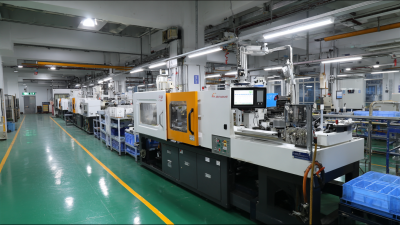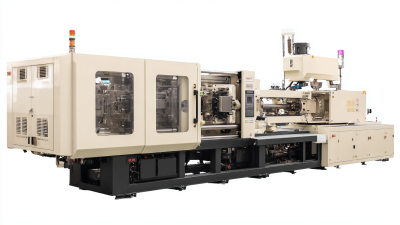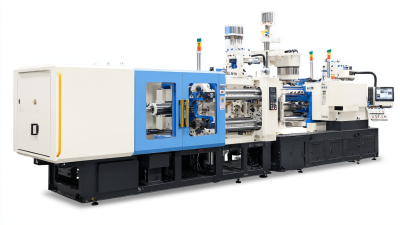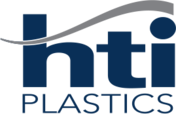How to Enhance Production Efficiency with Plastic Injection Machines for Optimal ROI
In today’s manufacturing landscape, the optimization of production efficiency is paramount for achieving a strong return on investment (ROI). A recent report by the Plastics Industry Association indicates that the plastic injection molding market is projected to grow significantly, with an expected CAGR of 5.2% through 2025. Central to this growth is the role of the plastic injection machine, which not only enhances production capabilities but also reduces waste and energy consumption. By leveraging advanced technologies and automation, manufacturers can streamline their operations, thereby improving overall productivity and profitability. As industries increasingly seek sustainable practices, investing in state-of-the-art plastic injection machines becomes essential for companies aiming to stay competitive and maximize their financial outcomes in this dynamic field.

Understanding the Basics of Plastic Injection Molding for Increased Efficiency
Plastic injection molding is a pivotal manufacturing process that significantly enhances production efficiency when executed correctly. According to a report by Market Research Future, the global plastic injection molding market is expected to reach approximately $590 billion by 2025, growing at a CAGR of 5.5%. This growth can be attributed to the rising demand for lightweight and durable materials in various industries, including automotive, consumer goods, and electronics. Understanding the mechanics of this process is essential for manufacturers looking to optimize their production capabilities.
One key aspect of enhancing efficiency in plastic injection molding is the careful selection of machinery and materials. Advanced machines equipped with precise temperature controls and automation capabilities can significantly reduce cycle times while maintaining consistent quality. A study from the Society of Plastics Engineers found that modern injection molding machines can achieve cycle time reductions of 20-40% compared to older models. Additionally, the use of innovative materials can further streamline the production process, leading to reduced scrap rates and lower production costs. As manufacturers embrace these advancements, they position themselves for optimal ROI and a competitive edge in the ever-evolving market landscape.
Identifying Key Factors Impacting Production Efficiency in Injection Molding
In the realm of injection molding, optimizing production efficiency is critical to achieving a significant return on investment (ROI). Key factors impacting efficiency include the selection of appropriate process parameters, such as melt temperature, mold temperature, packing pressure, and cooling time. Recent studies have demonstrated that through careful adjustments, such as maintaining a melt temperature of around 270 °C and a mold temperature of 80 °C, production cycles can be significantly reduced while minimizing defects like shrinkage and warpage. By utilizing advanced optimization frameworks, manufacturers can enhance the performance of molded parts, ensure high-quality output, and reduce waste.
Furthermore, the transition towards sustainable practices within injection molding necessitates an emphasis on circular economy principles. This includes the adoption of bio-based materials, which not only help mitigate plastic pollution but also foster innovation in product design and production processes. Material flow analysis plays a crucial role in identifying the circularity potential of these new materials, allowing manufacturers to optimize their processes further. By exploring these factors, companies can not only enhance their production efficiency but also contribute to a more sustainable manufacturing ecosystem in the long run.
Best Practices for Operating Plastic Injection Machines to Maximize Output
Operating plastic injection machines effectively is crucial for maximizing production output and achieving optimal return on investment (ROI). One of the best practices is to continually monitor and adjust the machine settings. This includes fine-tuning parameters such as temperature, pressure, and cycle times to ensure consistency during the production process. Regularly calibrating equipment can prevent costly downtimes and ensure that the machines are performing at their peak efficiency.
Another essential practice is to maintain a clean and organized workspace around the plastic injection machines. Implementing routine maintenance schedules that include cleaning molds, checking for wear and tear, and inspecting hydraulic systems will not only enhance the longevity of the equipment but also improve the quality of the finished products. Training operators on the importance of machine upkeep and best operational techniques can lead to significant gains in productivity and a reduction in error rates, ultimately fostering a more efficient production environment.

Optimizing Machine Settings for Enhanced Performance and Reduced Downtime
Optimizing machine settings in plastic injection machines is crucial for enhancing production efficiency and achieving an optimal return on investment (ROI). According to industry reports, effective fine-tuning of machine parameters can lead to a substantial reduction in downtime, which is a significant factor affecting overall productivity. With advancements in technology, the integration of predictive maintenance strategies can help manufacturers identify potential machine failures before they occur, thereby minimizing unplanned interruptions. This not only augments throughput but also extends the lifespan of the equipment, resulting in lower operational costs.
Moreover, implementing smart manufacturing technologies allows for real-time monitoring of production processes. For instance, the latest trends indicate that companies leveraging AI and machine learning for optimizing machine performance can experience an increase in operational efficiency by nearly 10%. In the context of the automotive industry, where agility and sustainability have become paramount, optimizing production with advanced analytics and automation is essential to meet the evolving demands of electric vehicle manufacturing. By continuously monitoring and adjusting machine settings, manufacturers can ensure they remain competitive in this rapidly changing landscape while maximizing their investments.

Investing in Technology: Upgrading Equipment for Long-Term ROI and Sustainability
Investing in technology is a crucial strategy for manufacturers aiming to enhance production efficiency and sustainability. Upgrading to advanced plastic injection machines can significantly impact your bottom line. These state-of-the-art machines not only improve cycle times and precision but also reduce waste and energy consumption. By adopting next-generation equipment, companies can streamline their production processes, ensuring high-quality output with minimal resource utilization.
Beyond immediate production benefits, investing in modern technology fosters long-term ROI through lower maintenance costs and increased longevity of equipment. As the market becomes increasingly competitive, organizations that prioritize upgrading their machinery position themselves as leaders in sustainability. Enhanced energy efficiency and reduced material waste also contribute to greener production practices, aligning with global environmental goals. Therefore, committing to upgrading equipment not only serves the company’s financial interests but also aligns with broader sustainability initiatives, making it a win-win for both the business and the planet.
Related Posts
-

Exploring Innovative Alternatives to Plastic Injection Machines for Modern Manufacturing
-

Evaluating the Best Large Injection Molding Machines for Global Buyers in 2025 Industry Trends and Insights
-

Global Quality Revolution How Chinese Moulding Plastic Machines Capture International Markets
-

Addressing Common Challenges with Small Plastic Molding Machines in Production
-

Ultimate Injection Machine Comparison for Optimal Performance Selection
-

Exploring the Comparative Benefits of Different Injection Molding Machine Types
